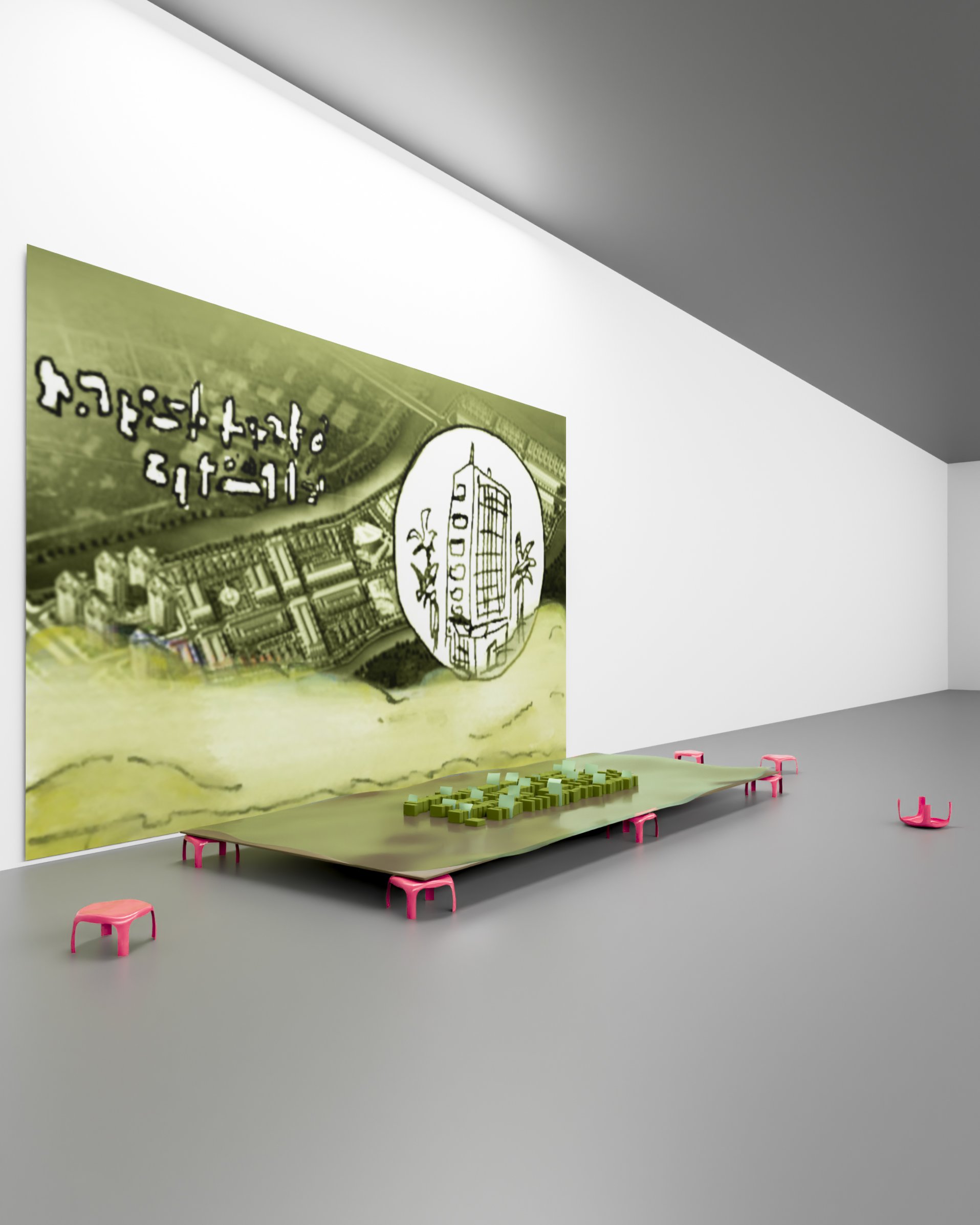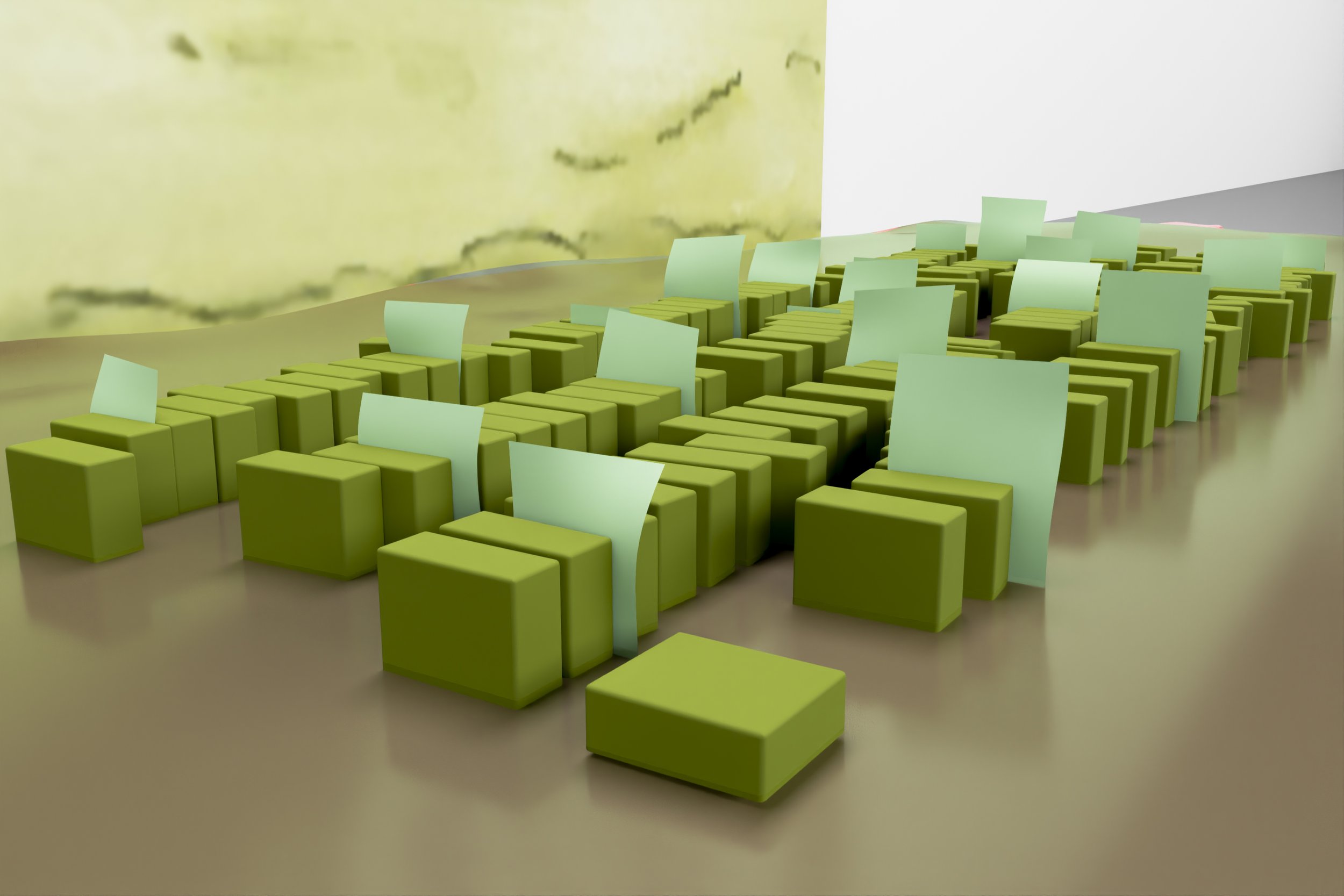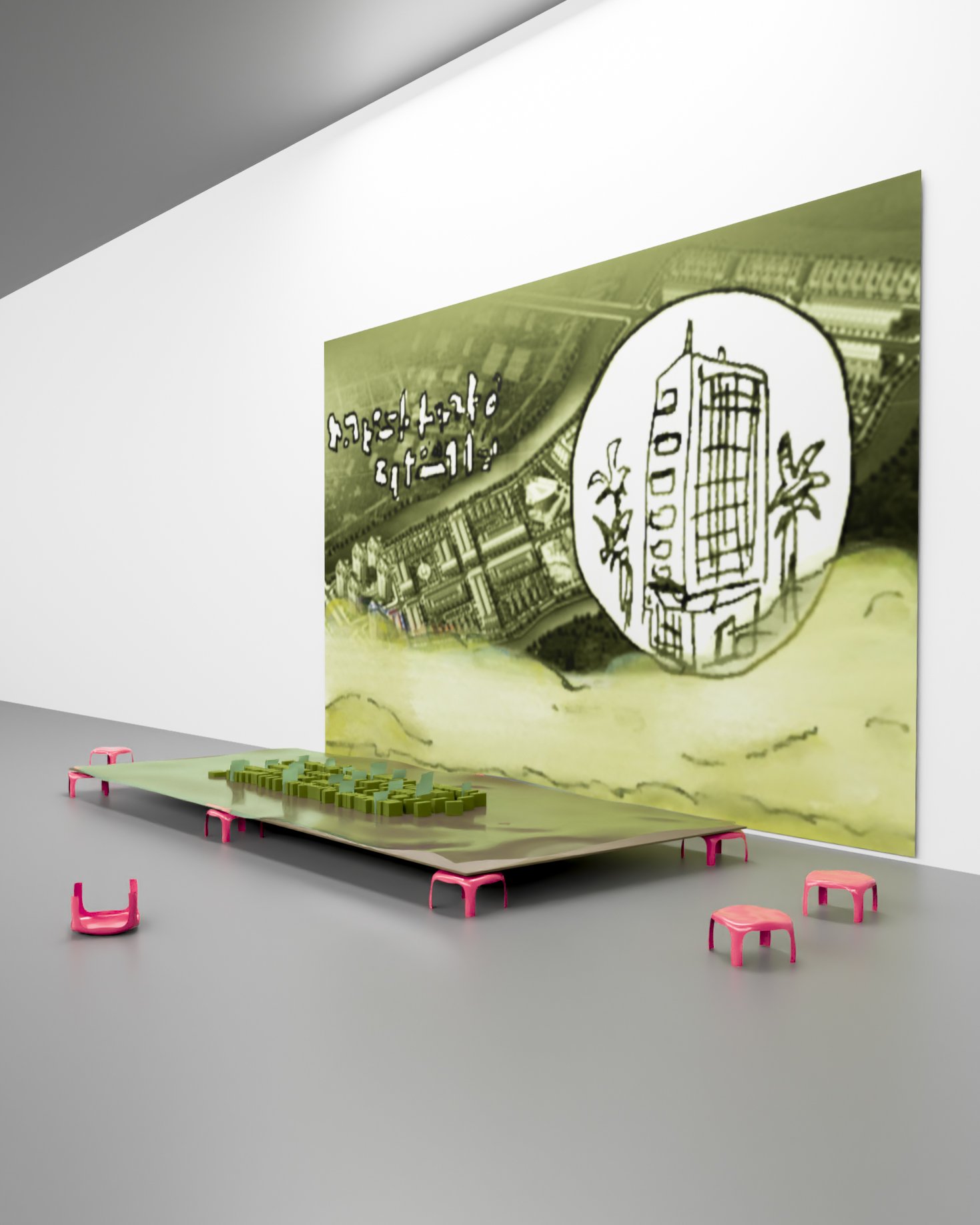https://uwaterloo.ca/fine-arts/events/artist-talk-alvin-luong
The talk at University of Waterloo occurs on October 8, 2025 at 12:00PM in the Critical Media Lab( 263 Phillip Street Waterloo, ON, CA N2L 3G)
https://uwaterloo.ca/fine-arts/events/artist-talk-alvin-luong
The talk at University of Waterloo occurs on October 8, 2025 at 12:00PM in the Critical Media Lab( 263 Phillip Street Waterloo, ON, CA N2L 3G)
In June 2024, I revisited Bidong Island on two separate occasions to continue my work on island and below the sea of the island.
The first of these visits came through the invitation of Dr. Hafiz Borkhanuddin, Director of Marine Biology at University Malaysia Terengganu. I joined Dr. Borkhanuddin and his Masters students on their monthly research dives to examine the state of the marine ecosystem on the sea bed around Bidong. This was a long and exhaustive day under the heavy sun of an exceptionally hot Terengganu summer. According to Dr. Hafiz, the intense heat of June had brought with it a heavy bleaching event upon the corals. A widespread series of deaths hit many species of corals some the size of a hand to some the size of a two sedans.
Joining the team for such a long and focused day that extended into the evening for debriefing, transformed my relationship to Bidong. I had begun this relationship through my own one-way projection upon the island based on its traumatic history. I expected for the island to have a psychological burden, a deep sombreness and sorrow. Having experienced a full working day by people who treat the island as a part of their livelihoods and their deep research interests, I now have a more realistic relationship to Bidong. This was certainly the case as I observed the joy and satisfaction of the marine biology students as they undertook their dives. I felt at ease, although in seasickness, as I laid on our boat for a quick nap. This insignificant leisure activity was deeply freeing, I felt I could work with the island now on my own terms and at a casual cadence.
The second visit this summer was joined by a local guide, Darius, who I had met the previous year when I had first travelled to Bidong. We recounted our steps and inspected how the Terengganu State Museum had cleared parts of the dense forest of the island to create a foot path that traces the trail where different refugee camp facilities and lodgings were formerly located in Bidong. These locations are marked with new signposts, and included language schools, cooking facilities, aid stations, and even an art school. Clouds of mosquitos swarmed us as we moved through rough footpath trying to evade red ants.
The primary beach of Bidong where an accessible jetty is located, is now undergoing the construction of concrete wave walls to reduce the burden of the sea on the beach. I wonder how this new environmental engineering of the island will impact its ecosystem and how people may relate to its history of the island. The natural gradation of the beach is being erased by a concrete cliff. On this second excursion to Bidong I had taken the same boat that I had last year and from my first visit this summer with the marine biologists. The boat was also captained by the same person, Toro.
My Ration Market project took on a new development in its Ration Eater iteration. The artwork was presented at The Plumb in a show curated by Callum Schuster, called “On a Table, Over Time”.
Ration Eater features a sculpture as well as a tasting event wherein guests can eat an actual bowl of the rau muong/ river spinach-ration congee that was advertised for sale in my Ration Market Special sculpture. The food that was served is a simple congee made with salt, water, and jasmine rice, that is then topped by a slurry of blended rau muong and then garnished with fried shallots. For me, the work was a way to bring the fiction of Ration Market further into life. At the tasting event, guests were encouraged to bring their own bowl and spoon, which for me as an artist, generates a mise-en-scene of a provisional sharing canteen.
The event for Ration Eater was brilliantly accompanied by the curator of the show, Callum, who prepared a cocktail revolving around the Vietnamese herb, Rice Paddy Herb/Ngo Om. An herb that came over to the Americas through the arrival of refugees from Vietnam. Callum had concentrated the rice paddy herb into a simple syrup paired with coconut water, Cointreau, Tanqueray, among other ingredients.
It was my first “relational work”, an activity that brought an intimate depth to the Ration Market project.
The event seemed like a fitting way to mark what feels like the closing of a chapter, with the openings of my three-years-in-making project, After the Cataclysm, Before the Storm, and my show of photographs and computer manufactured images in Destiny Is Not A Good Friend at Hunt Gallery. This period between March and April distills everything that I’ve been working on for three years—when I returned to Toronto in January 2020 after half a year working in Guangzhou, Jakarta, and Ho Chi Minh City, right before the pandemic.
It was a period of breakthrough development, I lived with the folks from HB Station / SJT / Boloho / Fong Fo and Gudskul / Serum / ruangrupa in the lead-up to their Documenta projects which in hindsight, imparted upon me a deep sensitivity to the spatial, political, material characteristics of the places around me. It untethered me from thinking about art production within silos, and to pay attention to the vernacular of culture (in the Bourdieu-sense) around me. To make art that may look less like art and more like the things around its means of production. This I believe, is a path towards continued experimentation.
Some video tests using cheap xerox prints and diptych strategies to combine images of “tunnel rats” and exposed sewage holes around my family home on the outskirts of Ho Chi Minh City. “Tunnel Rats” were often shorter American troops who crawled thru underground tunnel systems in search of Vietnamese guerrillas who built the tunnels to evade aerial assaults. The sewage holes are a result of a contemporary botched real estate development on land that formally trained guerrillas to fight the French and American colonizers.
Overall, it has been a very satisfying time building this new commission. It makes me want to produce more sculptures to fit into my world building practice.
The universe that my ‘Ration Market’ builds is being extended into a special edition of the project called ‘Ration Market Special’. The title itself is a reference to and follows the grammatical logic of the Vietnamese and Cantonese word ‘dac biet/特別’, meaning ‘special’.
The ‘Ration Market’ will be expanded into a food cart that sells the river spinach rations as a prepared meal consisting of a rice porridge with a topping of reconstituted river spinach with a texture similar to spinach in a saag paneer. This food cart will also sell sim cards for different cellphone carriers in Asia Pacific, advertise a currency exchange service for currencies from Asia Pacific, as well as a makeshift booth for producing headshots for visa applications. Overall, ‘Ration Market Special’ is meant to paint a picture of a precarious station providing a quick meal and low-end services for people trying to flee Vietnam, a region that will soon face growing migratory pressures from Sea Level Rise (more of that below). The picture of migration that this artwork builds is not one for the upwardly mobile, who can migrate through official channels and high-end means of travel through flights, but rather one of the working class who may have to seek grey-market goods and human smuggling services to move across borders. It is a picture of low-end globalization in an era climate crisis.
The organization Climate Central provides a very intuitive and easy to comprehend visualization of the current climate models agreed upon by scientists and researchers in the field. Below are visualizations that reference the latest models from IPC2021. We can observe that Vietnam faces tremendous migratory pressures as its largest cities, Hanoi, the political centre in the north of Vietnam, and Ho Chi Minh City, the economic centre in the south of Vietnam, will both be effectively underwater when taking into account Sea Level Rise and the annual floods during the monsoon season. The areas around these sprawling metropolises which include small villages and towns will also be affected. The areas in red are regions that are below the projected flood level by 2050.
More relevant to my personal concerns is the Ho Chi Minh City area and regions to the south of HCMC. Below we can observe how Ho Chi Minh City’s historic quarters, Saigon and most of Cholon, are surrounded by a ring of flooding. Moving out, we can see the entire southern tip of Vietnam is effectively below projected flood levels. This also includes Cần Thơ, a historically important hub where Cantonese diaspora live, and where my grandmother moved to flee from the Japanese invasion of China during WW2. This area also includes Phuong Phu, the land that my video ‘Hole Story’ is about.
Aside from the loss of habitable areas and great cities, another great tragedy comes from the loss of effective agricultural land. When observing satellite images of regions around and south of HCMC, we can see that the land is densely packed with agricultural projects. Below we can see the agricultural lands near the vicinity of HCMC, and then the whole area south of HCMC. A myriad of green polygons can be observed in these satellite images dedicated to farming.
Lastly, we have a simulated fly-over of the southern tip of Vietnam around Ca Mau. In the video there is a simulated rain storm, and the whirring sounds come from the fans of an Nvidia RTX 3090 at full power. The GPU computing a storm sounds like a storm….
New developments. This wall work is nearing completion. It is composed of eight signage ‘panels’ that depict a failed housing development in HCMC and a green wash creeping from the sides that contain highly detailed drawings of river spinach.
Ration Market (11.02.2022)
200 survival rations made of river spinach/通菜/rau muông, 1 cut plastic sheet, 3 found plexi sheets, 9 red stools.
Moving forward, I’d like to make every installation of the ‘Ration Market’ unique by detailing the materials used to install the work, the amount of rations being installed, and using materials around the site of the installation.
Each iteration of a ‘Ration Market’ should be noted by date and documented. The installation should be provisional and low-end.
In contrast to the wet and nocturnal images of my ‘degradation pictures’, these sunset images convey a clarity in their fidelity, and a literal brightness in their illuminated form.
As the sun sets in Phong Phú (Ho Chi Minh City), the emerging moon pulls the rivers that surround the commune upwards which floods the land. The severity of the flooding is based on the height of the rivers which is further determined by the seasons, like the monsoon periods, as well as oceanic sea level rise that engorge the rivers. Night fall is then akin to an omen for things to come. As the lunar flooding of tonight becomes the permanent flooding of tomorrow. The southern half of South East Asia is due to be underwater by 2050 according to today’s climate predictions.
Here with these photographs, a permanent sunset is staged through a yellow-orange light that radiates through the smoggy skies of each image depicting Phong Phú in the early Twenty First Century. This current moment in 2022 does indeed feel like a sunset period. A moment before the flooding is permanent. A moment before the flooding is simply known as the shoreline.
This also feels like a sort of mourning.
Above is a picture of my friends observing the rising river waters in Phong Phú during sun set.
I’m constructing pictures that build up a visual world for the tong choy rations and Hole Story to exist together in for printed and exhibition contexts. A visual world that conveys degradation from a repeated cycle of wetting and drying.
Photography has existed in my practice for the purposes work to accomplish a specific project. While I take many photographs in leisure, typically with a phone, I had never used these leisurely images in my art practice. These two modes of image production were distinct operations. Now, I have been able to work with my leisure images with these ‘degradation pictures’ (a temporary name). Leisurely images that are specific to the geography of my tong choy rations and Hole Story are selected and given a treatment.
This type of work constitutes a deeper intimacy between myself and the artwork because these ‘degradation pictures’ are sourced from moments when I wasn’t actively laboring. In other words, these are images from my normal daily life tied to a specific and relevant geography and time. These images are a product of life and curiosity while living and researching somewhere. They are low-fi and compressed jpegs. These are photographs that a person makes and are then repurposed as a material to make art with.
When I view a ‘degradation picture’ I recall the moment or the reason why I took the picture. It is not as sentimental as it sounds, these pictures are usually just some curiosity that I come across in mundane life. When the added treatment transforms these images into ‘degradation pictures’, I impose an anticipated underwater future from sea level rise in Southeast Asia. Tragedy occurs when present time mundanity meets a dreaded future.
In an odd way, I think this is a preparation for mourning.
A flowering Tong Choy (Ipomoea Aquatica) is positioned in front of a faded hammer and sickle.
Composition sketches for the Tong Choy rations.
What would a contemporary ration or shelf-stable emergency food made of Tong Choy look like?
During the reunification of Vietnam and the country’s reconstruction, my family was rationed Tong Choy as a primary food source. The plant, carrying both high-nutrition and toxic elements from American ordnances, was easily cultivated in the wet lands of the newly formed Ho Chi Minh City. Today, the plant grows in wild abundance in many parts of the city.
Here, over 45 years after Reunification, I have been prototyping the form, packaging, and aesthetics of a ration for future emergencies. It is important that these rations look ‘handy’ as if any civilian could produce them, that the packaging is simple without specialized packaging and tools used to make today’s highest-end rations, like the USA MRE; and that they look like the could be sold by any street vendor.
Ong choy/tong choy/water morning glory
Wrapping up my residency with the Art Gallery of Ontario. The last half of Workers’ Dance involves producing headshots that are in homage to Jeff Walls’ Young Workers’ (1978-1983) and utilizing the ideological strategies of portraiture from leftist political movements from the 20th Century.







